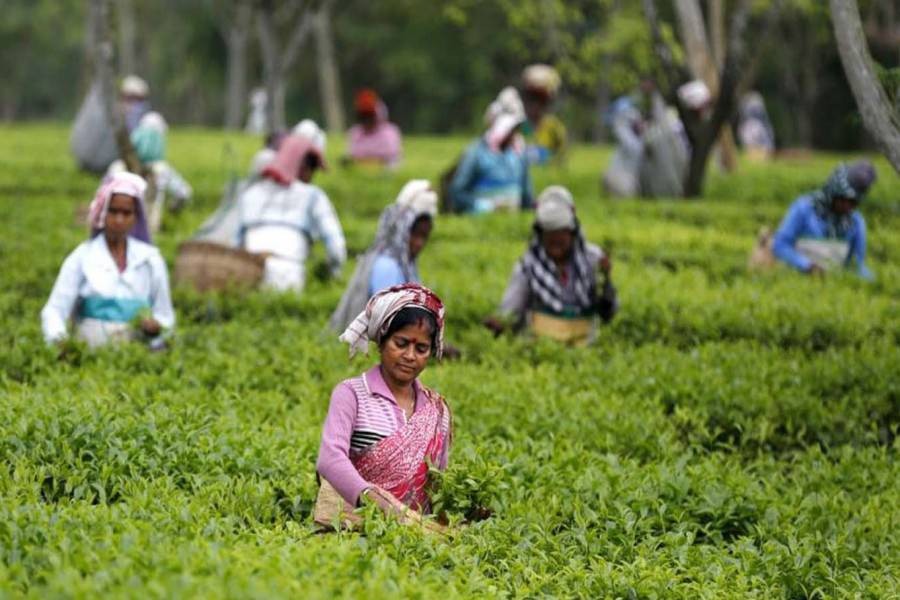How busy people are in today's modern city life and how diverse their manifestations are. With a new sunrise, waking up with a cup of tea begins our constant rush of a busy life.
A cup of tea provides profound gratification across many aspects, including laughter, sobbing, joy, and practically every other emotion. The green sphere of the tea garden arranged as an artistic portrait attracts us utterly.
But how many of us know there is a dark world under this light? How many of us who find this aesthetic beauty fascinating are aware of the countless tears and sighs that have gone into producing it?
Development of the tea industry in Bangladesh
Tea has been around in China since ancient times. Although tea has been introduced in different countries since the year 800, the introduction of tea in this country was started by the British East India Company.
In 1834, a committee formed by the Governor General of India, Lord William Bentinck, declared after extensive research that Assam tea was superior to Chinese tea. This event opened new horizons for the tea industry of this region.
In 1854, commercial tea cultivation started in this region through the 'Malnichara tea garden' in Sylhet. But the problem emanated was that the tea plantation required a lot of labour. Thus, a brutal history of human civilisation was created.
Poor cultivators from regions like Bihar, Odisha, Madras, Uttar Pradesh, Bakura, etc., were recruited as tea labourers on contract in terms of lifetime employment. The dodgy British made them lose their minds by telling them stories of a better life; they told them that 'Gach hillega to paisa milega,' means if you shake the trees in the garden, money will fall.
Not only trickery but, in many cases, they were forced to listen to them through intimidation. The helpless people believed the words of the crafty Englishmen and left their familiar unknown environment hoping for a better life.
But it didn't take long for them to break this mistake. From the beginning, the authorities' negligence towards them was extreme, including inhumane work, wage discrimination, the outbreak of diseases, etc., and death due to lack of treatment.
No progress in centuries
Currently, tea is one of the main cash crops in Bangladesh. Tea is exported to about 25 countries of the world from Bangladesh. Last year in 2021, despite the corona epidemic, the highest total of 96.5 million kg of tea was produced in the country's history. About 0.7-0.8 million workers are directly and indirectly involved in this industry.
They are mostly treated like modern slaves. Today, when the price of 1 kg of rice is 50-60 taka, the price of 1 litre of soyabean oil is 200 taka, the wage of a tea worker is only 170 taka a day.
Surprisingly, it was Tk 85 a few years ago. There is no retirement allowance for them at the end of service.
According to a study published by the International Labour Organisation (ILO), 55 per cent of tea workers have a monthly income between 1500 - 2000 taka, 33 per cent earn 1500 taka, and only 2 per cent can earn 3000 taka.
Tea workers have been living in this region for ages, but they have no idea of land rights, and they live in piles of small airless houses.
Even if there is a plan to repair the house from the garden, it is only on paper. The British left and the Pakistanis also departed, but poverty didn't leave them.
Cherishing basic human rights
After 51 years of independence, tea workers have no legal rights in their ancestral homes. The owner can peel off any worker from the plantation if he wants. The child born in the tea garden today has no permanent address; its future is uncertain.
Tea workers' wages do not even meet their minimum nutritional needs. Workers are at extreme health risk due to a lack of rest, drinkable water, and hygienic sanitation at work.
Under the Tree Plantation Labour Ordinance of 1966 and the Plantation Rules of 1977, the responsible tea plantation authorities are also responsible for ensuring workers' health care.
But out of 164 gardens across the country, only 6 have 1 MBBS doctor. The ILO says 63 per cent of workers are at health risk. Among the workers, 72 per cent suffer from abdominal pain, 84 per cent from headaches, and 74 per cent from muscle pain. Most of the workers suffer from anaemia.
64 per cent of the tea workers are women workers. Even worse, they are not given adequate maternity leave. Mothers often give birth to physically and mentally ill children due to malnutrition. About 91 per cent of women workers are victims of harassment by their bosses.
According to the data collected by the Tea Garden Education Rights Implementation Council, out of 166 tea plantations across the country, only 6 (according to another opinion 10/13) have government primary schools. There are only 3 secondary schools.
Although there need to be more educational institutions, cheap liquor shops have been established in almost every garden.
If you write, page after page will end, yet the chronicle of this life in servitude might not. It isn't easy to imagine today how much sacrifice and compassion these artists have made to build today's art for more than one and a half hundred years.
The life of medieval slaves had to be accepted while turning the vast impassable desert-like hilly land surrounded by mountains into the tea industry.
Tea workers must be ensured their right to education, health care, housing, and land for overall development. And for this, a special allocation should be made in the national budget for tea gardens.
Appropriate government initiatives are needed to ensure fair wages for tea workers and mainstream these backward communities by creating quotas in government jobs, schools, and colleges.
If these individuals, whose lives have been plagued by slavery for centuries, experience some improvement, it will also benefit the nation.


